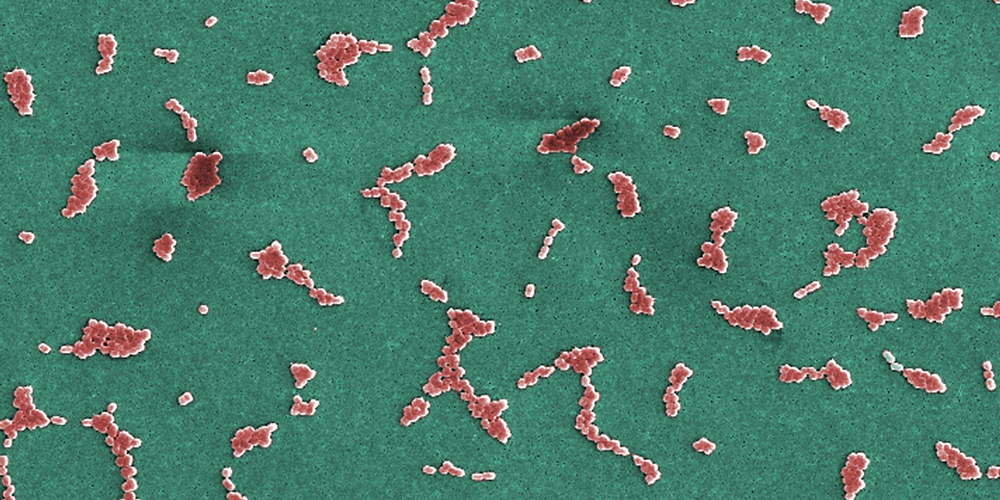The World Health Organization classified the drug-resistant pathogen Acinetobacter baumannii as a critical priority for antibiotic development. One development strategy targets the production of acinetobactin, the A. baumannii siderophore, or iron chelator, that allows the pathogen to scavenge for the scarce iron nutrient inside the host. Scientists have previously determined that synthetic analogs of acinetobactin can curb bacterial growth by blocking iron uptake or inhibiting acinetobactin formation. To aid in analog production, Syed Fardin Ahmed and Andrew Gulick at the University at Buffalo wanted to leverage A. baumannii enzymes that biosynthesize acinetobactin. They published their recent work in the Journal of Biological Chemistry.
Janice Haney Carr via the Centers for Disease Control and Prevention Public Health Image Library
Scanning electron microscopy image of clusters of aerobic, Gram-negative, non-motile, Acinetobacter baumannii bacteria.
Acinetobactin biosynthesis involves an assembly line process performed by nonribosomal peptide synthetases. In these biosynthetic pathways, an adenylation domain plays a key role in substrate selectivity. The authors used available structures of the acinetobactin adenylation domain BasE to pinpoint residues to mutate in the substrate binding pocket to alter the size and allow for molecules larger than the natural substrate 2,3-dihydroxybenzoic acid. They performed enzyme activity assays and steady-state kinetic analysis to identify and characterize four BasE variants that functioned with larger substrates with efficiencies similar to the wild-type enzyme with the natural substrate.
Finally, the researchers solved the structures of three BasE variants with alternative substrates in the binding pockets. These structures confirmed visually that the mutations enlarged the binding pockets, highlighting which BasE residues contribute to accommodating specific portions of the substrate chemical structure.
Future steps will include completing a combined chemical and enzymatic synthesis of acinetobactin analogs and testing their activity for bacterial growth inhibition. The authors anticipate that their detailed investigation of BasE substrate selectivity will advance the discovery of siderophore-inspired antibiotics.
